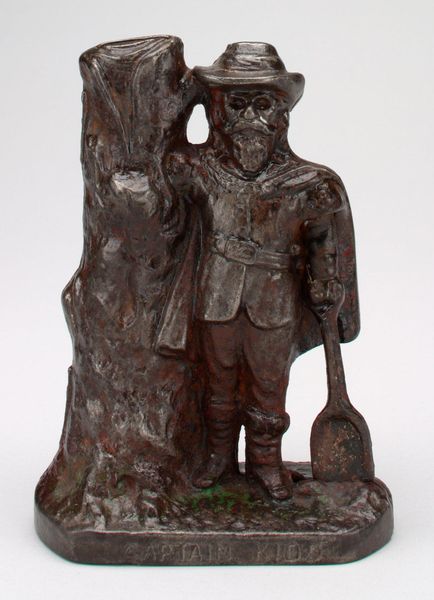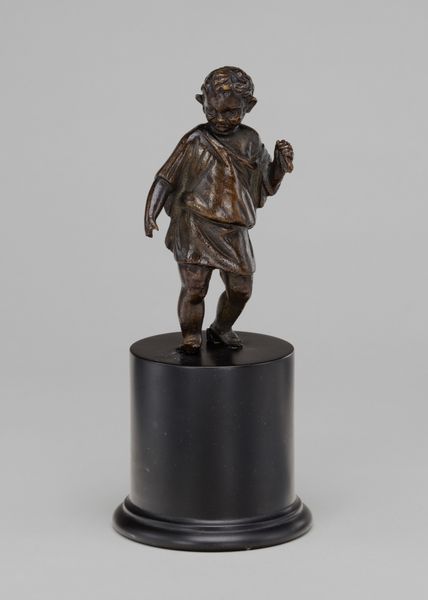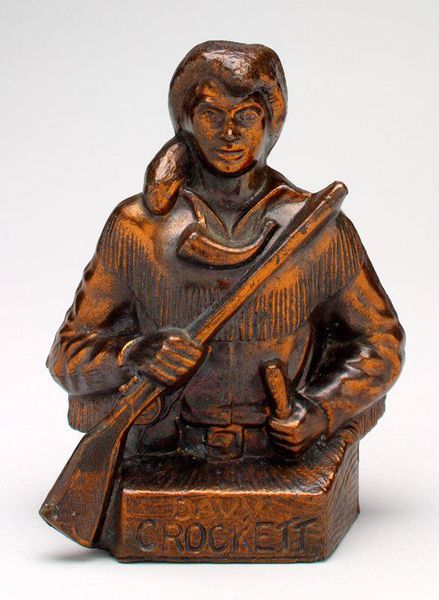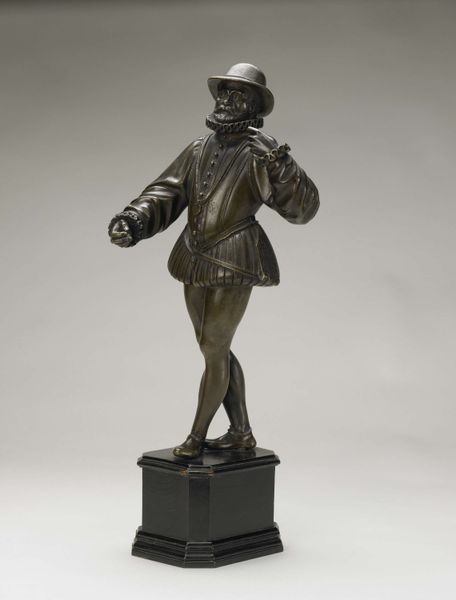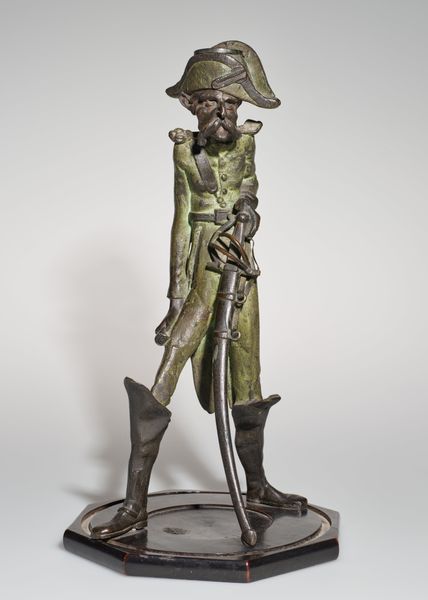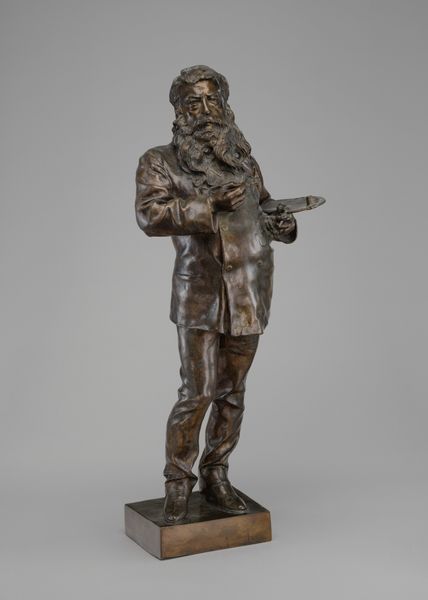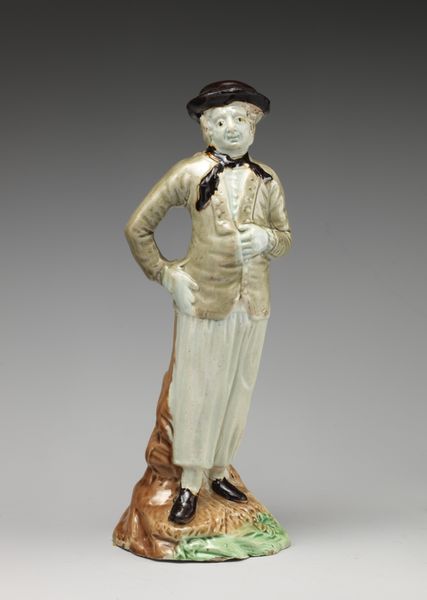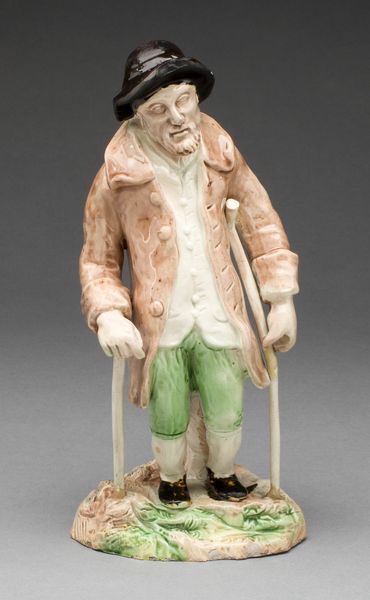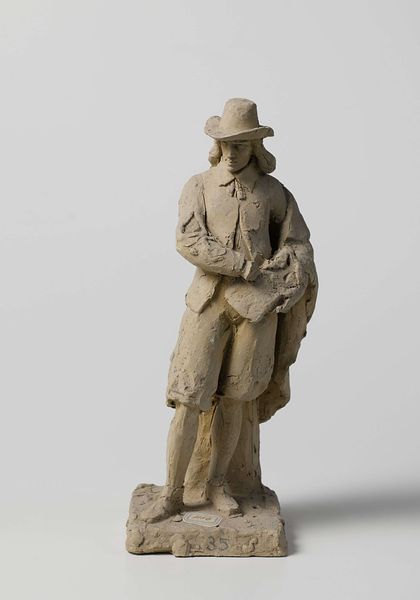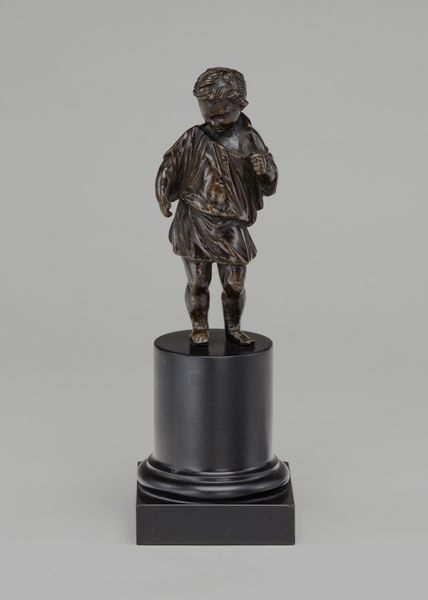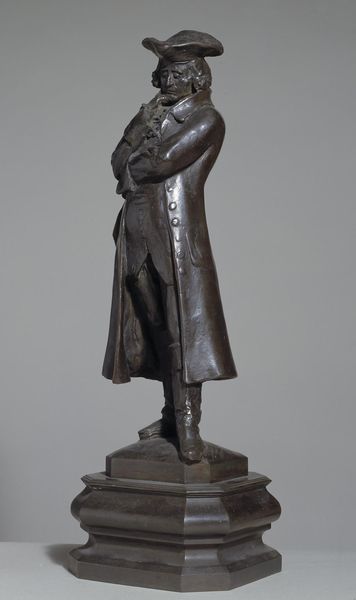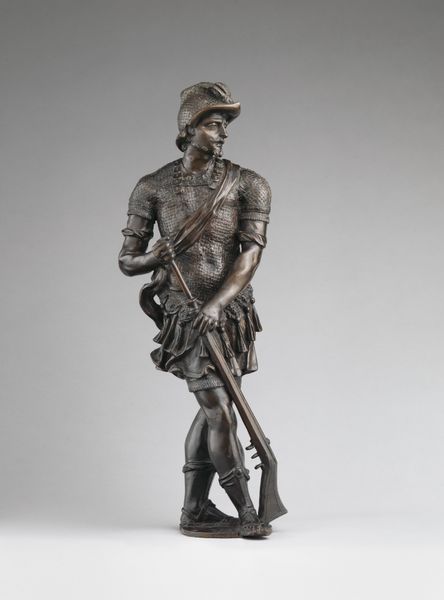
metal, sculpture
#
portrait
#
metal
#
figuration
#
sculpture
Dimensions: 5 3/4 x 2 1/4 x 2 1/16 in. (14.61 x 5.72 x 5.24 cm)
Copyright: No Known Copyright
Editor: Here we have the "Baseball Player" still bank, crafted around 1909 by the A.C. Williams Company. It’s a metal sculpture, a portrait in a way. There's something inherently nostalgic about it, evoking a bygone era. What stories do you think it tells? Curator: It's more than nostalgia; it's about understanding the complex intersections of industrialization, leisure, and social mobility at the turn of the century. This bank represents the democratization of baseball, becoming accessible across social classes. How do you see the depiction of the player's uniform and posture influencing its reception at the time? Editor: I hadn't considered the social mobility angle. His stance seems so casual, not heroic. Is that a deliberate statement, maybe suggesting accessibility to a broader demographic? Curator: Precisely! Consider the cultural context. Mass production made leisure items, like this bank, affordable, fueling consumer culture and shaping modern identities. Were these mass produced sculptures actually aimed at children as potential consumers, linking values such as the sport itself with capitalistic ones? Editor: So, it's not just a charming sculpture but a piece embedded in a larger system of social and economic changes? That's so fascinating. Curator: Exactly. Think about how such an object helped shape a collective American identity and idealized masculinity. What does this representation omit, and whose stories are not being told through such popular objects? Editor: I see what you mean; its existence is not just about baseball, but a broader cultural narrative and maybe the beginning of some societal issues we are dealing with today. I’ll certainly look at objects differently going forward. Thanks! Curator: And I hope it will also incite more conversation. These reflections help challenge conventional narratives and unpack the complicated undercurrents that made that "bygone era" so difficult for some to access or be a part of.
Comments
No comments
Be the first to comment and join the conversation on the ultimate creative platform.
